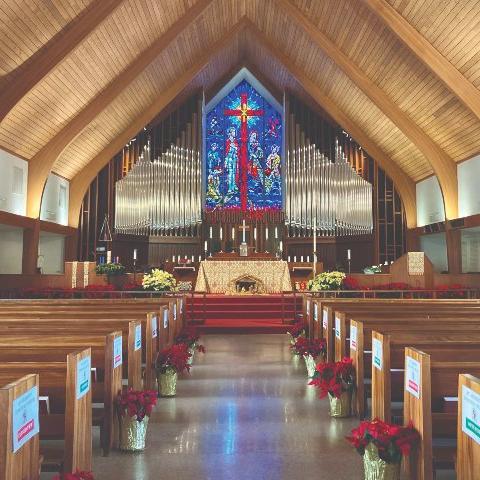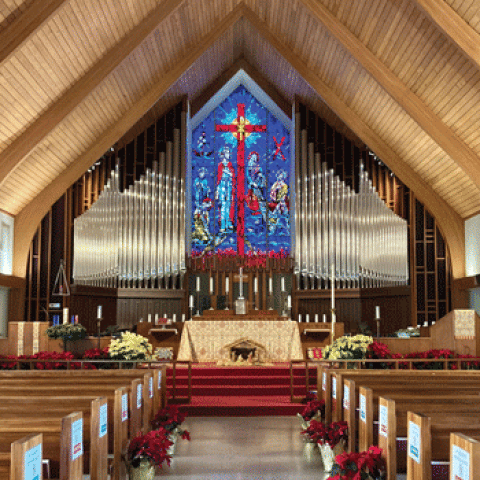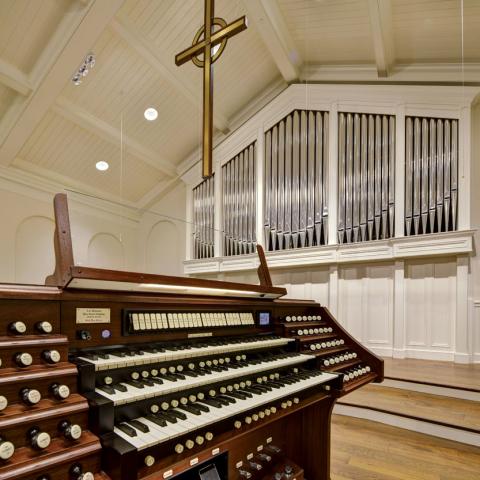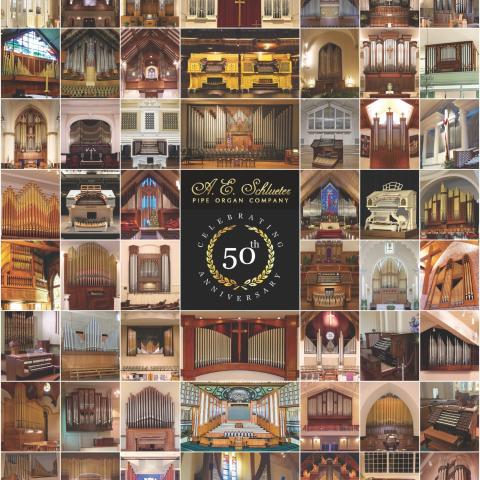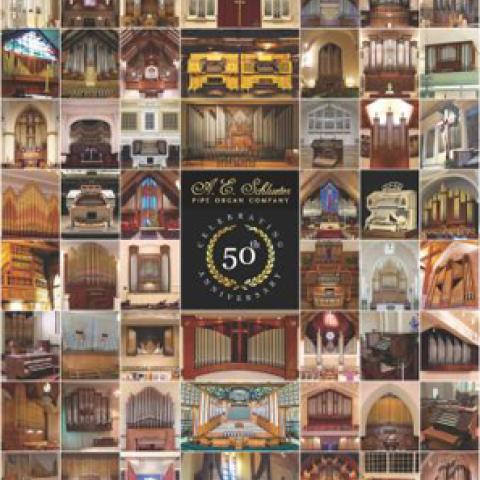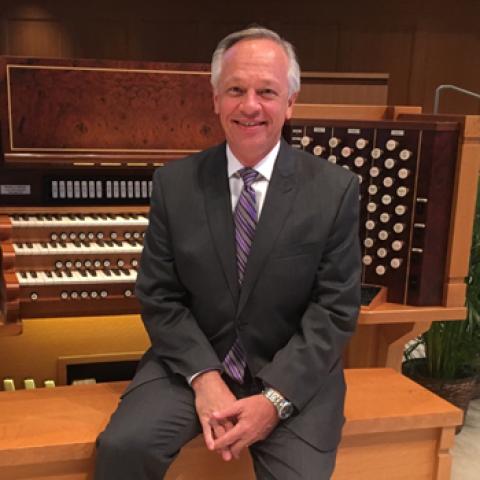A. E. Schlueter Pipe Organ Company, Lithonia, Georgia, has built a new organ for Saint Andrew’s Episcopal Church, Fort Pierce, Florida: 3 manuals, 38 ranks.
The new stoplist was envisioned first and foremost to support the musical needs of this church and its English choral tradition. The stoplist is purposely eclectic in design, allowing it to support many different schools of organ and choral music.
The windchests on the organ are electro-pneumatic slider and electro-pneumatic unit action. The winding system features a combination of spring and weighted reservoirs with independent concussion bellows on the windchests. This church’s generous acoustic allowed the use of moderate wind pressures, ranging from 2½ to 4 inches.
The three-manual console feeatures terraced drawknobs. It was constructed of sapele mahogany with drawknobs custom turned from African blackwood. With its low profile, it allows excellent sightlines to the choristers, and the inbuilt castors permit it to be moved as needed. For a control system, the console features the Syndyne 8400 system, which supports a large number of functions.
The new organ is featured on the cover of the May 2022 issue of The Diapason: https://www.thediapason.com/content/cover-feature-schlueter-st-andrews-episcopal-ft-pierce-fl.
Music for the slideshow features the A. E. Schlueter organ at First Presbyterian Church, Savannah, Georgia. Richard Morris plays Sketch in D-flat Major, op. 58, no. 3, by Robert Schumann. Photo credit: The Reverend Canon Ellis E. Brust.
For information: www.pipe-organ.com
770/482-4845
Art3@pipe-organ.com

